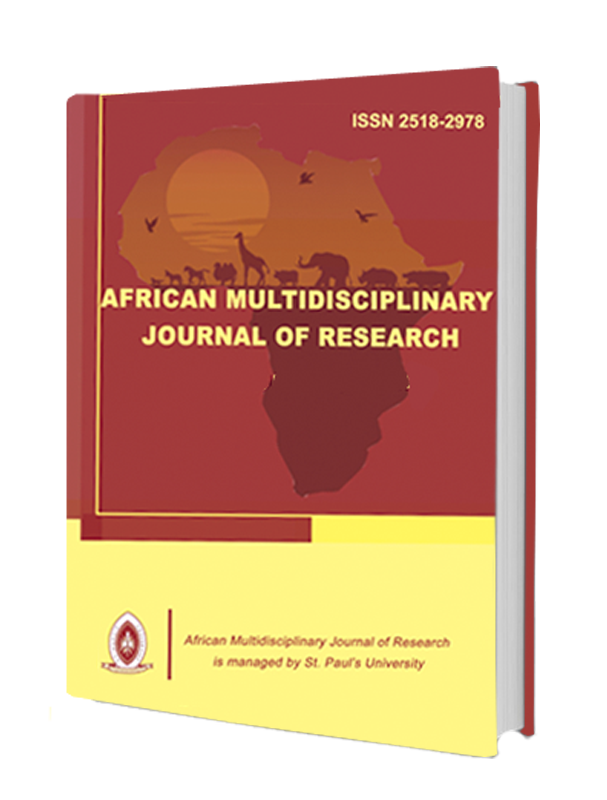The Background of New Testament Household Codes: Towards a Historical Evaluation of the Roots Shaping Present-day African Families and Gender Roles
##plugins.themes.academic_pro.article.main##
Abstract
This article delves into a comparative examination of household codes present in Jewish, Greco-Roman and New Testament traditions so as to unravel their distinct characteristics and implications. By scrutinizing the socio-cultural contexts of each code, we explore the nuanced roles assigned to individuals within the household structure. Moreover, the study evaluates the profound impact of these codes on the position of women in African families. Through this comparative lens, the research seeks to unveil the intersections between ancient household norms and their enduring influence on gender dynamics in contemporary African societies. Insights gained from this exploration contribute to a richer understanding of the historical roots shaping present-day familial structures and gender roles.
##plugins.themes.academic_pro.article.details##
References
- Bell, A. A. (1998). Exploring the New Testament world. T. Nelson Publishers.
- Collins, R. F. (2002). 1 & 2 Timothy and Titus: A commentary (1st ed). Westminster John Knox Press.
- Falola, T. (2010). The power of African cultures (Transferred to digital print). University of Rochester
- Press [u.a.].
- Girard, M. (2000). “Love as Subjection, the Christian Ideal for Husband ands and Wives: A Structuralist Reading of Ephesians 5: 21-33.” in Gerald Caron (et al). Women also Journeyed with Him: Feminist Perspectives on the Bible (pp. 125-136). Collegeville, Minnesota: Liturgical Press.
- Green, J. B., & McDonald, L. M. (Eds.). (2017). The world of the New Testament: Cultural, social, and historical contexts (Paperback edition). Baker Academic.
- Jeffers, J. S. (1999). The Greco-Roman world of the New Testament era: Exploring the background of early Christianity. InterVarsity Press.
- Keener, C. S. (2014). The IVP Bible background commentary: New Testament (2nd edition).
- InterVarsity Press.
- Mwaniki, L & E. Mouton. (2015). “From Patriarchy to Participatory Freedom? The Transformative Potential of the Ephesians Household Code in View of Changing Gender Roles in Kenyan
- Families”. In E. Moulton et al (eds.) Living with Diginity: African Perspectives on Gender Equality. Stellenbosch: Sun Press.
- Neufeld, D., & DeMaris, R. E. (Eds.). (2010). Understanding the social world of the New Testament.
- Routledge.
- Piper, J. (2009). This momentary marriage: A parable of permanence. Crossway Books.
- Piper, J., & Grudem, W. A. (Eds.). (1991). Recovering biblical manhood and womanhood: A response to Evangelical feminism. Crossway Books.
- Solevå̊ g, A. R. (2013). Birthing salvation: Gender and class in early Christian childbearing discourse.
- Brill.
- Wa Gatumu, K. (2022). Ephesians 5: 21-33 and Gender Equity: Towards a Mutual, Egalitarian and Gender-Balanced Church Leadership. African Multidisciplinary Journal of Research, 4(2). Retrieved from https://journals.spu.ac.ke/index.php/amjr/article/view/59
- Wasike, A. N. (2001). “Genesis 1–2 and some Elements of Diversion from Original Meaning of Creation of Man and Woman”, in M. N. Getui, K. Holter & V. Zinkuratire (eds.). Interpreting the Old Testament in Africa pp. 175-180.Nairobi: Acton Publishers.
- Wright, N. T., & Bird, M. F. (2019). The New Testament in its world: An introduction to the history, literature, and theology of the first Christians. SPCK: Zondervan Academic.

